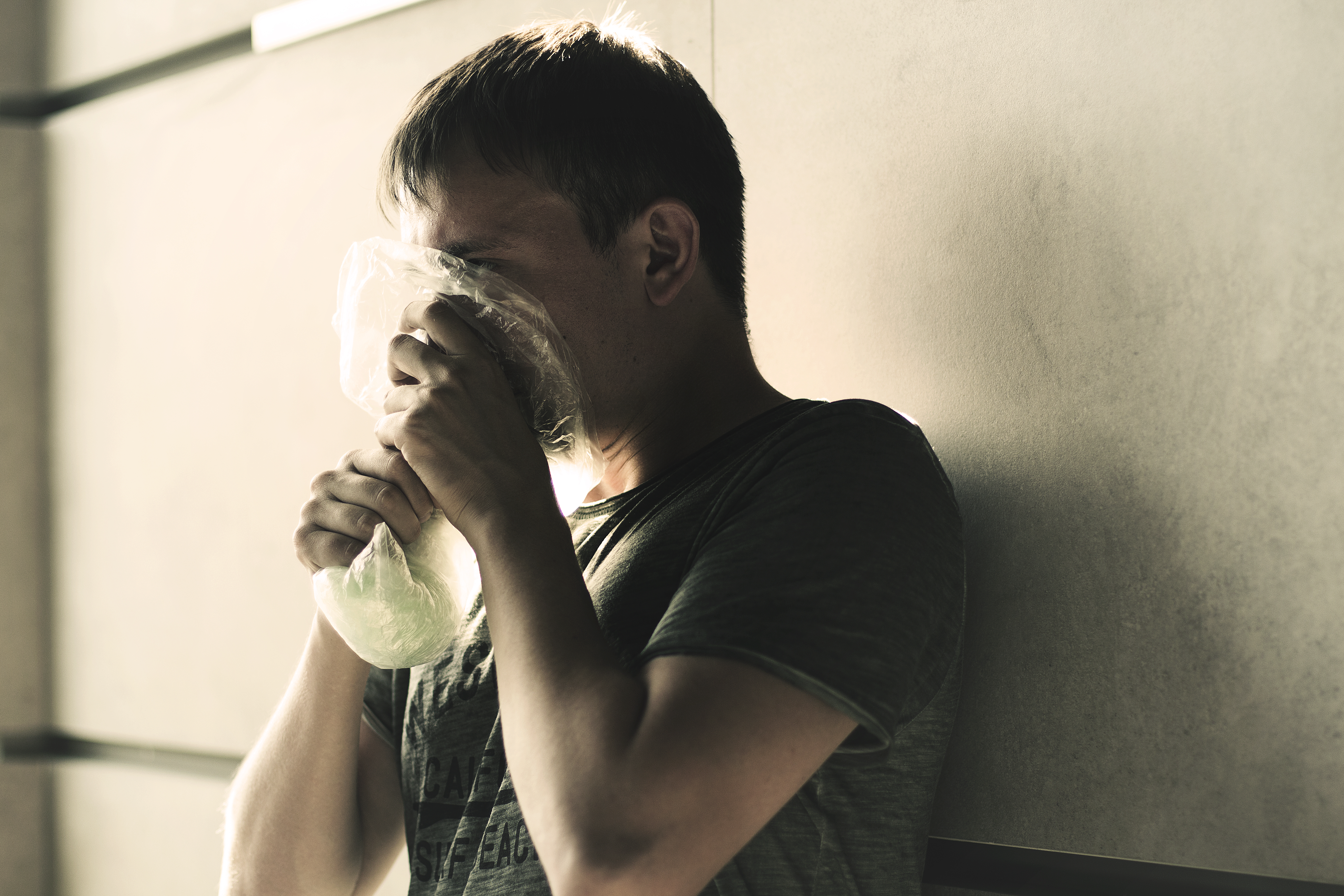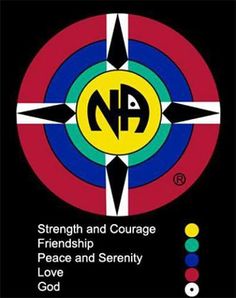|
Twelve-step Program
Twelve-step programs are international mutual aid programs supporting recovery from substance addictions, behavioral addictions and compulsions. Developed in the 1930s, the first twelve-step program, Alcoholics Anonymous (AA), founded by Bill Wilson and Bob Smith, aided its membership to overcome alcoholism. Since that time dozens of other organizations have been derived from AA's approach to address problems as varied as drug addiction, compulsive gambling, sex, and overeating. All twelve-step programs utilize a version of AA's suggested twelve steps first published in the 1939 book '' Alcoholics Anonymous: The Story of How More Than One Hundred Men Have Recovered from Alcoholism.'' As summarized by the American Psychological Association (APA), the process involves the following: * admitting that one cannot control one's alcoholism, addiction, or compulsion; * coming to believe in a Higher Power that can give strength; * examining past errors with the help of a sp ... [...More Info...] [...Related Items...] OR: [Wikipedia] [Google] [Baidu] [Amazon] |
Mutual Aid (organization Theory)
Mutual aid is an Organizational theory, organizational model where voluntary, collaborative exchanges of resources and services for common benefit take place amongst community members to overcome social, economic, and political barriers to meeting common needs. This can include physical resources like food, clothing, or medicine, as well as services like breakfast programs or education. These groups are often built for the daily needs of their communities, but mutual aid groups are also found throughout relief efforts, such as in Natural disaster, natural disasters or Pandemic, pandemics like the COVID-19 pandemic. Resources are shared unconditionally, contrasting this model from Charity (practice), charity where conditions for gaining access to help are often set, such as Means test, means testing or grant stipulations. These groups often go beyond material or service exchange and are set up as a form of political participation in which people take responsibility for caring fo ... [...More Info...] [...Related Items...] OR: [Wikipedia] [Google] [Baidu] [Amazon] |
Substance Abuse
Substance misuse, also known as drug misuse or, in older vernacular, substance abuse, is the use of a drug in amounts or by methods that are harmful to the individual or others. It is a form of substance-related disorder, differing definitions of drug misuse are used in public health, medical, and criminal justice contexts. In some cases, criminal or anti-social behavior occurs when some persons are under the influence of a drug, and may result in long-term personality changes in individuals which may also occur. In addition to possible physical, social, and psychological harm, the use of some drugs may also lead to criminal penalties, although these vary widely depending on the local jurisdiction.. Drugs most often associated with this term include alcohol, amphetamines, barbiturates, benzodiazepines, cannabis, cocaine, hallucinogens, methaqualone, and opioids. The exact cause of substance abuse is sometimes clear, but there are two predominant theories: either a gene ... [...More Info...] [...Related Items...] OR: [Wikipedia] [Google] [Baidu] [Amazon] |
Debt
Debt is an obligation that requires one party, the debtor, to pay money Loan, borrowed or otherwise withheld from another party, the creditor. Debt may be owed by a sovereign state or country, local government, company, or an individual. Commercial debt is generally subject to contractual terms regarding the amount and timing of repayments of #Principal, principal and interest. Loans, bond (finance), bonds, notes, and Mortgage loan, mortgages are all types of debt. In financial accounting, debt is a type of financial transaction, as distinct from equity (finance), equity. The term can also be used metaphorically to cover morality, moral obligations and other interactions not based on a monetary value. For example, in Western cultures, a person who has been helped by a second person is sometimes said to owe a "debt of gratitude" to the second person. Etymology The English term "debt" was first used in the late 13th century and comes by way of Old French from the Latin verb ' ... [...More Info...] [...Related Items...] OR: [Wikipedia] [Google] [Baidu] [Amazon] |
Compulsive Hoarding
Hoarding disorder (HD) or Plyushkin's disorder is a mental disorder characterised by persistent difficulty in parting with possessions and engaging in excessive acquisition of items that are not needed or for which no space is available. This results in severely cluttered living spaces, distress, and impairment in personal, family, social, educational, occupational, or other important areas of functioning. Excessive acquisition is characterized by repetitive urges or behaviours related to amassing or buying property. Difficulty discarding possessions is characterized by a perceived need to save items and distress associated with discarding them. Accumulation of possessions results in living spaces becoming cluttered to the point that their use or safety is compromised. It is recognised by the eleventh revision of the International Classification of Diseases (ICD-11) and the Diagnostic and Statistical Manual of Mental Disorders, 5th edition (DSM-5). Prevalence rates are estimate ... [...More Info...] [...Related Items...] OR: [Wikipedia] [Google] [Baidu] [Amazon] |
Human Sexual Activity
Human sexual activity, human sexual practice or human sexual behaviour is the manner in which humans experience and express Human sexuality, their sexuality. People engage in a variety of sexual acts, ranging from activities done alone (e.g., masturbation) to acts with another person (e.g., sexual intercourse, non-penetrative sex, oral sex, etc.) or persons (e.g., orgy) in varying patterns of frequency, for a wide variety of reasons. Sexual activity usually results in sexual arousal and physiological changes in the aroused person, some of which are pronounced while others are more subtle. Sexual activity may also include conduct and activities which are intended to arouse the sexual interest of another or enhance the sex life of another, such as strategies to find or attract partners (courtship and Display (zoology), display behaviour), or personal interactions between individuals (for instance, foreplay or BDSM). Sexual activity may follow sexual arousal. Human sexual activit ... [...More Info...] [...Related Items...] OR: [Wikipedia] [Google] [Baidu] [Amazon] |
Food
Food is any substance consumed by an organism for Nutrient, nutritional support. Food is usually of plant, animal, or Fungus, fungal origin and contains essential nutrients such as carbohydrates, fats, protein (nutrient), proteins, vitamins, or Mineral (nutrient), minerals. The substance is Ingestion, ingested by an organism and assimilated by the organism's Cell (biology), cells to provide energy, maintain life, or stimulate growth. Different species of animals have different List of feeding behaviours, feeding behaviours that satisfy the needs of their metabolisms and have evolved to fill a specific ecological niche within specific geographical contexts. Omnivore, Omnivorous humans are highly adaptable and have adapted to obtaining food in many different ecosystems. Humans generally use cooking to prepare food for consumption. The majority of the food energy required is supplied by the industrial food industry, which produces food through Intensive farming, intensive agricu ... [...More Info...] [...Related Items...] OR: [Wikipedia] [Google] [Baidu] [Amazon] |
Crime
In ordinary language, a crime is an unlawful act punishable by a State (polity), state or other authority. The term ''crime'' does not, in modern criminal law, have any simple and universally accepted definition,Farmer, Lindsay: "Crime, definitions of", in Cane and Conoghan (editors), ''The New Oxford Companion to Law'', Oxford University Press, 2008 (), p. 263Google Books). though statutory definitions have been provided for certain purposes. The most popular view is that crime is a Category of being, category created by law; in other words, something is a crime if declared as such by the relevant and applicable law. One proposed definition is that a crime or offence (or criminal offence) is an act harmful not only to some individual but also to a community, society, or the state ("a public wrong"). Such acts are forbidden and punishable by law. The notion that acts such as murder, rape, and theft are to be prohibited exists worldwide. What precisely is a criminal offence is def ... [...More Info...] [...Related Items...] OR: [Wikipedia] [Google] [Baidu] [Amazon] |
Gambling
Gambling (also known as betting or gaming) is the wagering of something of Value (economics), value ("the stakes") on a Event (probability theory), random event with the intent of winning something else of value, where instances of strategy (game theory), strategy are discounted. Gambling thus requires three elements to be present: consideration (an amount wagered), risk (chance), and a prize. The outcome of the wager is often immediate, such as a single roll of dice, a spin of a roulette wheel, or a horse crossing the finish line, but longer time frames are also common, allowing wagers on the outcome of a future sports contest or even an entire sports season. The term "gaming" in this context typically refers to instances in which the activity has been specifically permitted by law. The two words are not mutually exclusive; ''i.e.'', a "gaming" company offers (legal) "gambling" activities to the public and may be regulated by one of many gaming control boards, for example, the ... [...More Info...] [...Related Items...] OR: [Wikipedia] [Google] [Baidu] [Amazon] |
Marijuana Anonymous
Marijuana Anonymous (MA) founded in 1989 is an organization and twelve-step program for people with common desire to maintain abstinence from marijuana. History Marijuana Anonymous (MA) formed in June 1989 to address compulsive use of cannabis. Since its inception, the MA fellowship has followed the Twelve Traditions and suggests practicing the Twelve Steps, both of which originated from Alcoholics Anonymous. Among the founders at the first MA conference in Morro Bay were delegates from Marijuana Smokers Anonymous (Orange County, California), Marijuana Addicts Anonymous (the San Francisco Bay area ), Marijuana Smokers Anonymous anta Cruz CAand Marijuana Anonymous (Los Angeles County). Other existing fellowships from Seattle and New York City (1974), enfolded into MA later. Marijuana Anonymous set up in London UK in 2000. Marijuana Anonymous World Services is a non professional non-profit corporation formed to carry out the necessary business and legal affairs of Marijuana A ... [...More Info...] [...Related Items...] OR: [Wikipedia] [Google] [Baidu] [Amazon] |
Crystal Meth Anonymous
Crystal Meth Anonymous (CMA) is a California-based non-profit, public-benefit corporation founded in 1994. The members of the fellowship of Crystal Meth Anonymous work a twelve-step program of recovery with recovering crystal meth addicts. Participants in local groups meet in order to help others recover from methamphetamine addiction. CMA advocates complete abstinence from methamphetamine, alcohol, inhalants, and all other psychoactive drugs not taken as prescribed. History and demographics CMA was founded on September 16, 1994 in West Hollywood, California by Bill Coffey, a member of the 12 step recovery community in Los Angeles for over two decades at the time. The first group held its first meeting at the West Hollywood Alcohol and Drug Center. , CMA had a presence in over 100 metropolitan areas of the United States, as well as parts of the United Kingdom, Canada, Australia, and Iran. The first CMA World Service Conference was held in Park City, Utah in October 2008, durin ... [...More Info...] [...Related Items...] OR: [Wikipedia] [Google] [Baidu] [Amazon] |
Cocaine Anonymous
Cocaine Anonymous (CA) is a twelve-step program formed in 1982, November 18th for people who seek recovery from drug addiction. It is patterned very closely after Alcoholics Anonymous (AA), although the two groups are unaffiliated. While many C.A. members have been addicted to cocaine, crack, speed or similar substances, C.A. accepts all who desire freedom from "cocaine and all other mind-altering substances" as members. C.A. uses the book ''Alcoholics Anonymous'' as its basic text. Complementing this are the C.A. published works of members storybook titled, ''Hope, Faith and Courage: Stories from the Fellowship of Cocaine Anonymous Volume I & II, A Quite Peace and The Twelve Step Companion Guide. and the AA book ''Twelve Steps and Twelve Traditions''. C.A. was formed in Los Angeles, California in 1982 by an anonymous member who worked in the film industry and saw a number of people who had difficulty finding help from anyone knowledgeable about the special difficulties presen ... [...More Info...] [...Related Items...] OR: [Wikipedia] [Google] [Baidu] [Amazon] |
Narcotics Anonymous
Narcotics Anonymous (NA), founded in 1953, describes itself as a "nonprofit fellowship or society of men and women for whom drugs had become a major problem." Narcotics Anonymous uses a 12-step model developed for people with varied substance use disorders and is the second-largest 12-step organization, after 12-step pioneer Alcoholics Anonymous. there were more than 70,000 NA meetings in 144 countries. Narcotics Anonymous program Membership and organization The third tradition of NA states that the only requirement for membership is "a desire to stop using." NA says its meetings are where members can "meet regularly to help each other stay clean." All facts and quotes presented in "The Narcotics Anonymous program" section, unless otherwise sourced, come from the ''Narcotics Anonymous (Basic Text)''. Membership in NA is free, and there are no dues or fees. The foundation of the Narcotics Anonymous program is the Twelve Steps and Twelve Traditions. Narcotics Anonymo ... [...More Info...] [...Related Items...] OR: [Wikipedia] [Google] [Baidu] [Amazon] |








